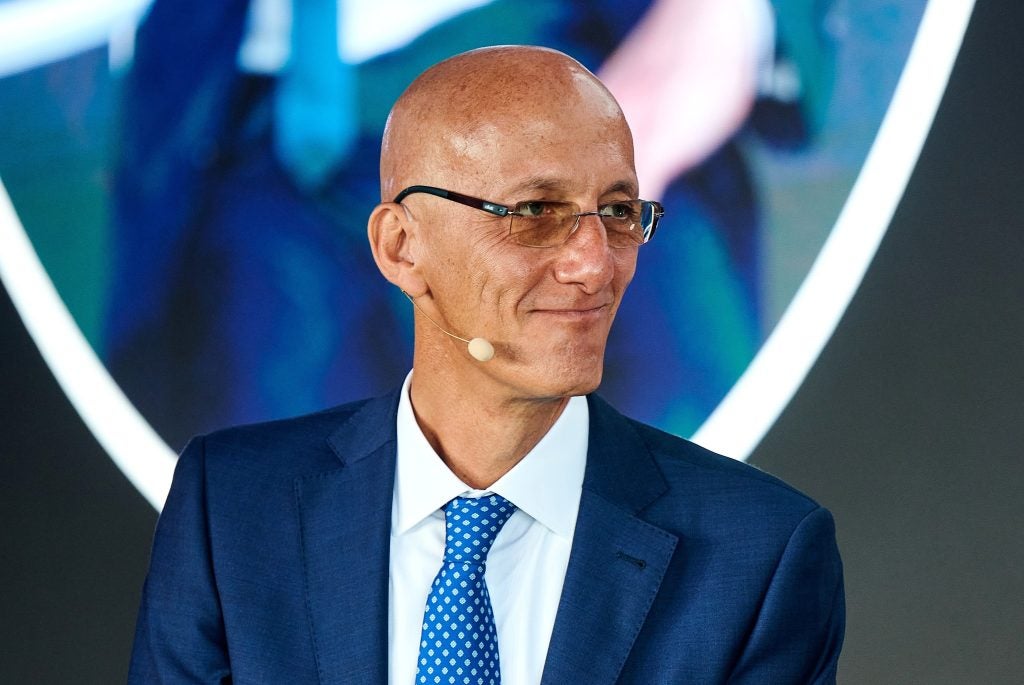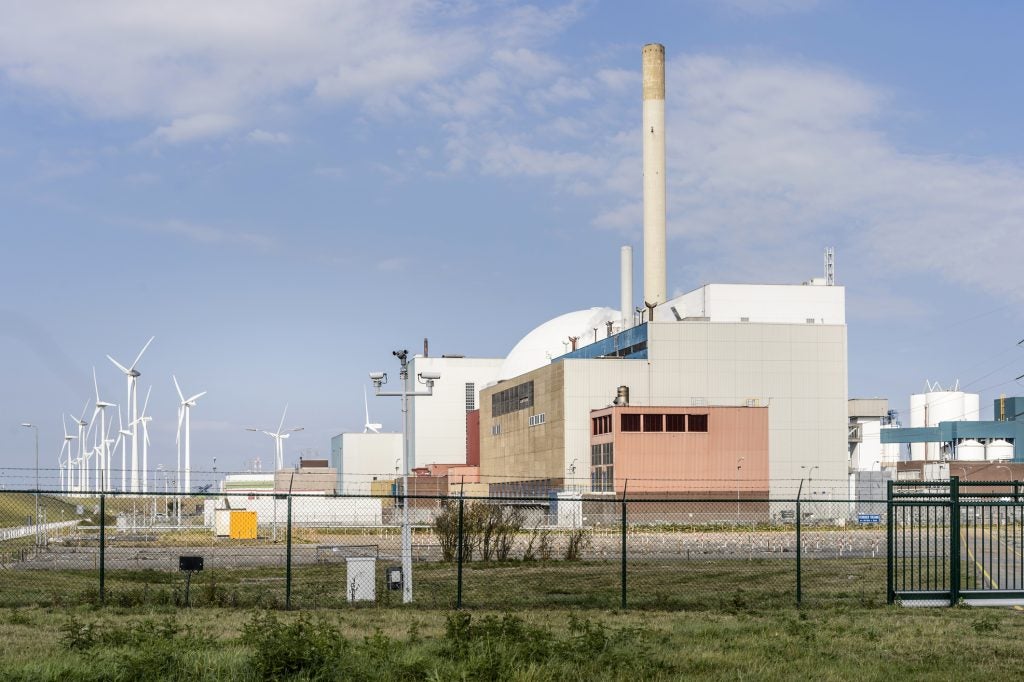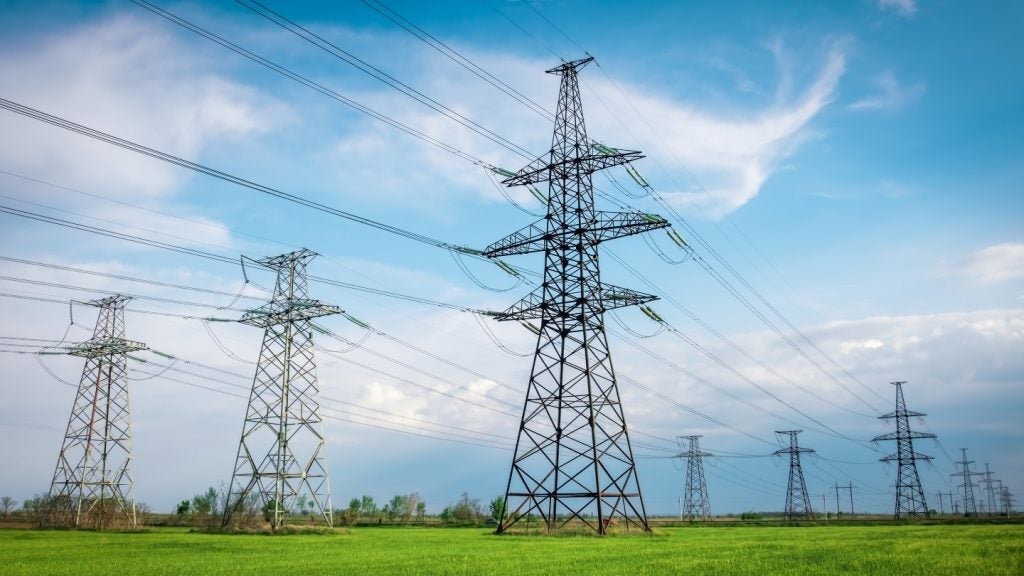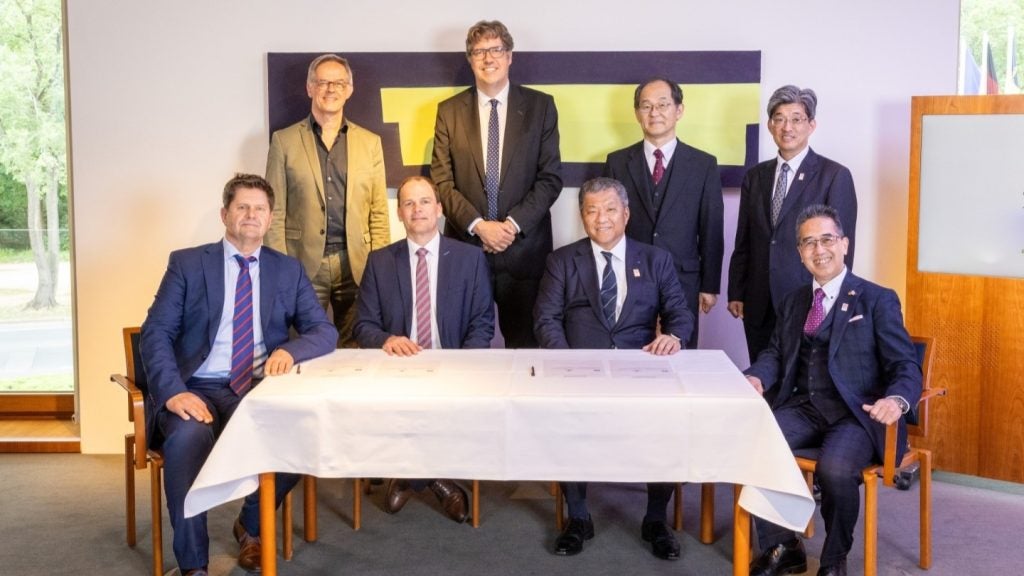Despite being critical to the energy transition, grids have not kept pace with the exponential growth of renewables in Europe. Unable to manage new capacity, they have served instead as a bottleneck to expanding green power.
Digitalisation has been deemed a cornerstone to allowing distribution system operators (DSOs) to adapt to today's rapidly evolving energy landscape. Yet, the current digital maturity of DSOs lags behind, according to the Wired for Tomorrow study, conducted by Eurelectric and consulting giant Accenture.
The study assessed the digital maturity – along with the technological readiness to support digitalisation – of 31 DSOs serving a total of more than 80 million customers across 21 European countries.
Speaking to Power Technology, Accenture’s EMEA utilities lead Andrea Falciai elaborates on the key findings of the report and how DSOs can move forward with digitalisation.
Current state of DSOs’ digital maturity: not a straightforward picture
The study assessed digital maturity through four capabilities reflecting the end-to-end DSO value chain: build, the DSO’s ability to expand the grid; operate, using the existing network at its full potential; maintain, generating predictable asset insights as well as increasing worker safety and productivity; and data-driven, using scalable and secured technologies to build, operate and maintain their systems.
The key insights were that data-driven capabilities – specifically, the cybersecurity domain – demonstrated relatively high digital maturity across the board, while operate and maintain capabilities showed a moderate level of digitalisation.
Build capabilities proved to most underutilise digital technology, especially in the design and engineering space.
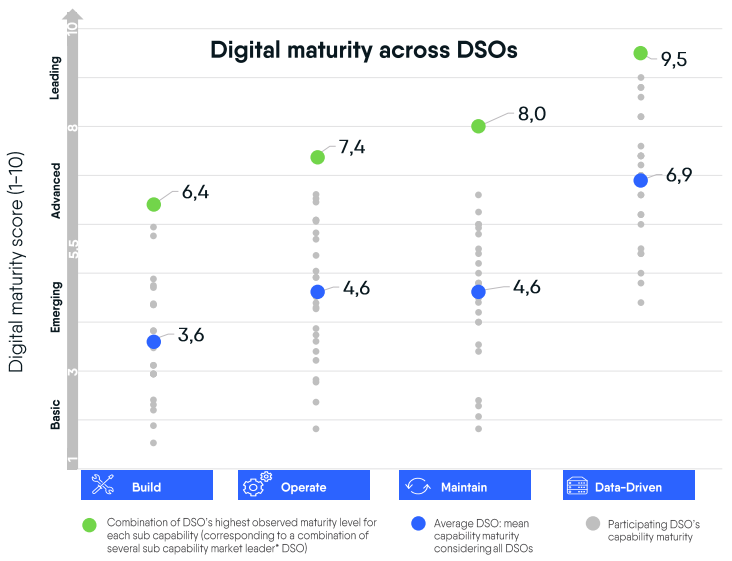
What was most notable in the research, however, is that “the distribution of digital maturity across the different DSOs is quite wide”, Falciai says. The data is “quite scattered”, meaning that there is neither a clear trend towards digitalisation nor a straightforward “way to the North Star” applicable across all DSOs.
He says: “The digital maturity of a DSO was very much based on each business’s context and specific challenges of where the DSO is based, considering the geopolitics, market and regulatory environment varies by country.”
What determines the digital maturity of DSOs?
Contrary to common assumptions, the study found that digital maturity among DSOs is not necessarily tied to their size.
In fact, Falciai says that smaller DSOs with less resources often find it easier to achieve higher digital maturity. Unlike their larger counterparts burdened with legacy systems, smaller DSOs can implement digital solutions from scratch, enabling them to be more agile and adaptable.
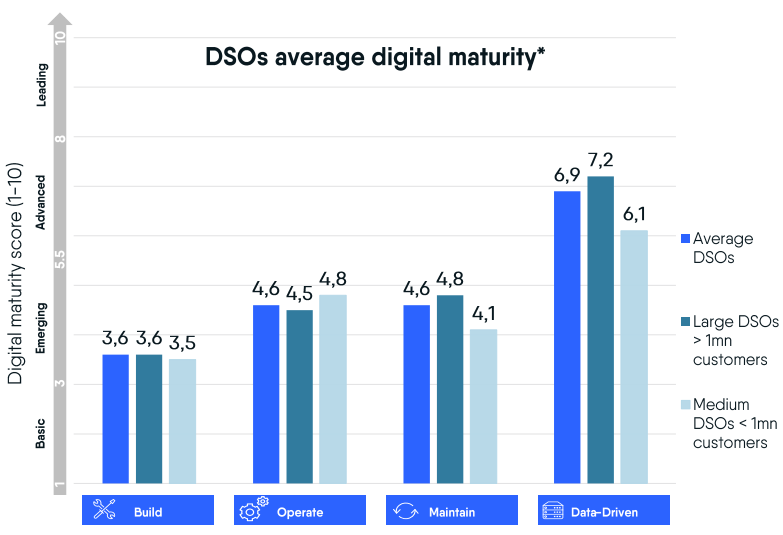
However, he caveats: “The other side of the coin is that normally smaller DSOs have less capacity or investment”, meaning they may struggle with scaling, as expanding and maintaining these systems require substantial resources. Nevertheless, the flexibility and speed with which they can adopt new technologies gives them a significant advantage, and they can manage to scale effectively through collaboration with bigger DSOs and strategic planning.
Rather than the size of the business, digital maturity hinges on the specific needs of the area of operation as well as each operator’s business demands, the report concluded.
Notably, DSOs with higher renewables penetration rates demonstrated a higher degree of digital maturity across all four capabilities.
Traditional power systems, a transmission-heavy model designed for unidirectional electricity flow from centralised generation to consumers, are ill-equipped to handle the non-active demand, decentralised generation and bidirectional flow between DSOs and transmission system operators introduced by renewables.
To manage the complexities of renewables, such as “additional challenges in grid operations and asset visibility”, DSOs incorporating more renewables were pushed to leverage solutions such as advanced distribution management systems using smart meter data.
“If you have more distributed energy resources, more renewables, the complexity of managing the grid becomes higher and you simply cannot do it manually. You need digital support,” Falciai says. “More complexity also means you need additional critical infrastructure like cybersecurity, so more complicated DSOs find themselves investing in digitalisation more.”
Falciai indicates that the correlation between renewable adoption and digital maturity reflects the broader urgent need to digitalise to prepare for unpredictability.
In the past few years, Europe’s ageing grids have been unable to cope with not only the addition of renewable power sources, but also geopolitical instability, he explains, specifically referring to Russia cutting natural gas flow to Europe. “In both cases, we needed to operate the network for a completely different energy flow, but we couldn’t rely on existing networks as they were not designed to work that way.”
Therefore, while the digitalisation of DSOs has risen in response to the proliferation of renewables and decentralisation of modern energy systems, Falciai stresses that DSOs must now adopt digital tools as a preventative measure to optimise distribution, balance supply and demand, forecast unpredictability and respond to fluctuations promptly.
Education is key to digital transformation
The report claimed that the greatest internal challenge to digitalising DSOs is talent acquisition and adapting to change.
The industry faces a shortage of skilled professionals capable of driving digital transformation, Falciai explains: “I recall a French client calculated how many digitally skilled people they needed to drive their business’ digitalisation, and they concluded they need an entire region’s student population to get hired in their company – and that is just one company.”
To address this challenge, he recommends that DSOs plan ahead, collaborating with educational institutions to build a pipeline of talent equipped with the necessary skills. “Investing in digital education for students three to ten years in advance will lead to having people with the right skills join your company down the line,” he says.
Although developing a digitally skilled next generation should be prioritised, businesses shouldn’t just sit back in the meantime.
Instead, they should leverage digital tools to train and upskill their existing workforce. Through digital training platforms and co-pilot tools, DSOs can not only bridge the skills gap but also enable less digitally savvy workers to perform complex tasks with greater efficiency.
In other words, digitalisation and education have a symbiotic relationship: education develops a digitally skilled workforce and digitalisation helps compensate for a less experienced one.
“It is really a matter of reshaping the way you run your business,” Falciai says, addressing the challenge of motivating existing employees to adopt digital tools. Here too, he claims, smaller DSOs tend to have an advantage over bigger DSOs with more people to train, a “legacy system” they need to outgrow and “probably fewer young people, who are already somewhat digitalised”.
There is “not just one way” to overcome employees’ reluctance to adapt to digitalisation, but a good point of departure is “explaining the value it can bring for the business” and approaching the digital rollout from a customer-centric view – customers, referring to the employees.
“When you think about retailers, their services are always tailored to the customer. This same approach should be used to introduce digital to your employees. You need to put them at the centre, understand their needs in the day-to-day job, figure out how they can easily incorporate digital tools and explain to them the value of transforming the way they work.”
The road ahead
“There is not one single solution that will work for everyone,” Falciai concludes. As the variable state of digital maturity across DSOs exhibits, the digitalisation of DSOs is a multifaceted journey influenced by specific business needs, renewable energy adoption and contextual challenges.
“There are general best practices, but every DSO needs to find its own journey based on its own context.”
However, that DSOs commonly have high data-driven digital maturity in the status quo signifies that the industry is well-placed to move forward with digitalising other capabilities.
DSOs can kick-off with overcoming the biggest internal hurdle to digitalisation by investing in digital education early on. Placing employees at the centre of the business’ digital transformation is also essential for empowering them to become active participants in the evolving system.
Of course, Falciai adds, internal efforts must be paired with external changes. Regulators and policymakers must chime in, advocating for funding and frameworks that support digital innovation.
The swifter DSOs embrace digital at scale, the better prepared they will be to navigate the fluctuant currents of the ever-changing energy terrain.


